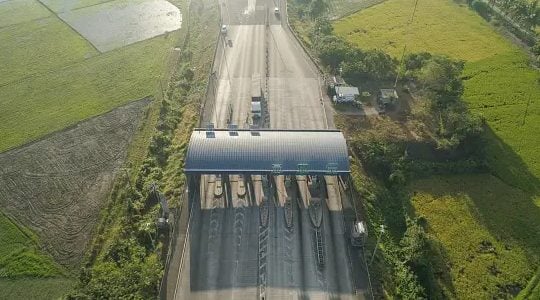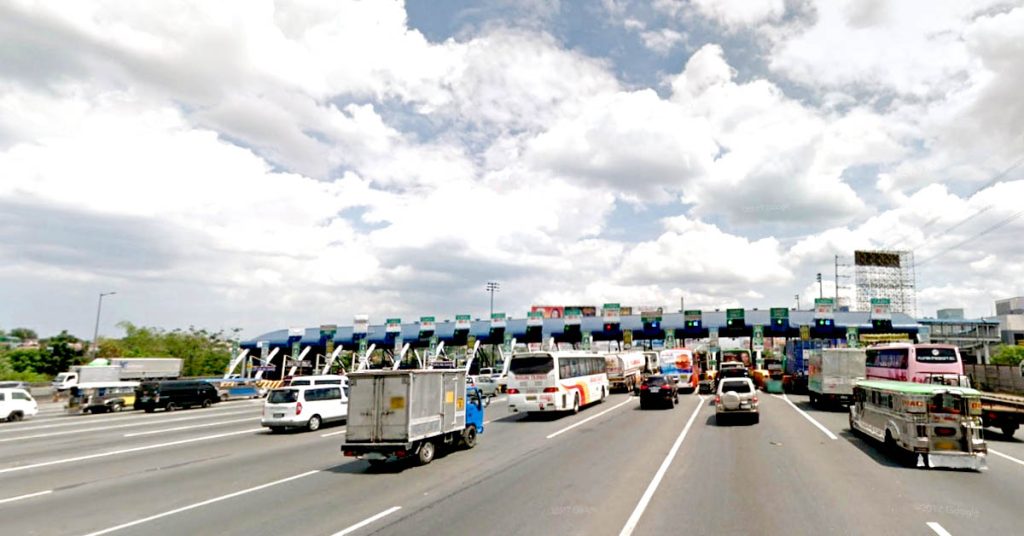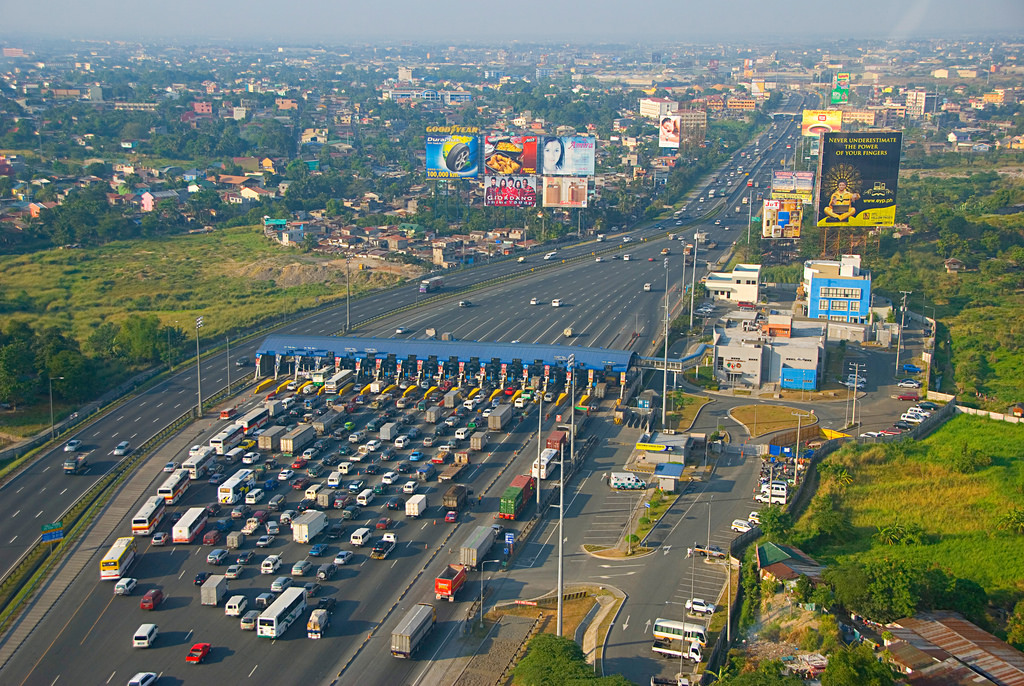BLOGS
NLEX Toll Hike: What You Need To Know
The Philippines has major expressways such as the CAVITEX, SCTEX, Skyways systems, SLEX, and NLEX, that serve as key transportation routes in the country. These highways are designed to facilitate the movement of vehicles, reduce travel times, and improve overall road safety.
Read more: How Much Travel Time These Roads Save For You
As part of the inflation, not only gas or fuel have made an increase. Just recently, last June 15, 2023, an increase to NLEX toll rates has been taken into effect. A toll fee is a charge or a fee imposed on motorists for the use of certain roads, bridges, tunnels, or expressways known as toll roads or tollways. According to the type of vehicle and distance, the Toll Regulatory Board (TRB) has approved a preliminary increase in the toll for drivers using the North Luzon Expressway (NLEX) from PHP 7 to PHP 98.

What is the Toll Regulatory Board (TRB)?
The Toll Regulatory Board (TRB) is a government agency in the Philippines that is responsible for regulating toll roads and ensuring that toll fees are reasonable and justifiable. It was created under Republic Act No. 7656, also known as the Toll Operation Decree, which was enacted in 1993.
The TRB reviews and approves toll rate adjustments proposed by toll road operators. This process involves assessing the reasonableness of the proposed rates based on factors such as the cost of construction, operation, maintenance, and the return on investment. The Toll Regulatory Board plays a crucial role in overseeing the toll road industry in the Philippines, aiming to balance the interests of toll road operators, commuters, and the general public by ensuring fair toll rates and quality service on toll roads.
Suggested Read: Philippine Highway Network: Everything You Need To Know
Why is there a price hike to NLEX toll fee?
Toll fees on expressways in the Philippines are periodically reviewed and adjusted by the government or the relevant toll road operators to account for inflation, operational costs, and infrastructure development. According to NLEX Corporation, the increased prices were a part of the NLEX approved periodic adjustments due in 2012, 2014, 2018, and 2020. They underwent extensive regulatory reviews and approvals. TRB permitted NLEX to collect this year the fourth and final tranche of the 2012 and 2014 periodic adjustments and just half of the 2018 and 2020 increases, the direct line from the is to “curb the existing inflationary situation and cushion their impact on the users of the expressway.” The Subic-Clark-Tarlac Expressway is similarly operated and maintained by NLEX Corp. The most recent increase in the toll was made on May 12, 2022, and ranged from P2 to P82.
According to the Public-Private Partnership (PPP) contract between the corporation and the government, the expressway is permitted to submit a petition to increase toll fees every two years. The new provisionally approved toll rate modifications were subjected to a lengthy, methodical, and in-depth study, and NLEX was only permitted to put them into effect after doing everything the TRB required of it. Despite requests to halt it, the TRB stands by its decision to authorize and carry out the NLEX toll hike. According to the agency, MPTC posted a surety bond worth P1.6 million, which might be used if the regulator determines that the charges ought to have been reduced.
One of the reasons why the NLEX toll hike is so significant and bigger in comparison to prior ones is inflation. The “minimum base escalator,” which is a factor added to toll rates so that they can start off low before gradually growing over time so that the toll operators can recoup their investment, is another factor taken into account when calculating toll hikes.
However, the old prices will continue to be served to public utility jeepneys (PUJs) covered by the NLEX Pass-ada, Tsuper Card discount and their rebate program.

How much is the new toll fee for NLEX?
The NLEX Corporation has proposed a toll rate change and has been allowed by the TRB, an extra P7.00 in the open system and P0.34-0.36 per kilometer in the closed system. Here is the new NLEX toll fee matrix for all classes and segments:
Open System
The open system runs from Marilao, Bulacan, to Metro Manila- Navotas, Valenzuela, and Caloocan. The NLEX toll hike will follow this increase:
- For Class 1 vehicles (ordinary cars and SUVs) – PHP 7 increase
- Class 2 vehicles (buses and small trucks) – PHP 17 increase
- Class 3 vehicles (big trucks) – PHP 19 increase
Closed system
As mentioned above, the basis of increased is per kilometer in the closed system. The closed system runs from Bocaue, Bulacan, to Sta. Ines, Mabalacat City, Subic-Tipo, as well as Pampanga.
- Class 1 – PHP 26 increase
- Class 2 – PHP 65 increase
- Class 3 – PHP 77 increase
In the new NLEX toll fee matrix, motorists traveling in the portion between Bocaue Bulacan and Sta Ines Mabalacat City, Pampanga will pay an additional PHP 26 for Class 1, PHP 65 for Class 2, and PHP 77 for Class 3 vehicles. Then, they must pay an extra PHP 4, PHP 8, and PHP 11 for Class 1, Class 2, and Class 3, respectively, at Subic-Tipo.
However, travelers from the NLEX end-to-end, Metro Manila and Mabalacat City, will pay an additional PHP 33 for Class 1 vehicles, Class 2 vehicles, PHP 81, and for Class 3 vehicles, an increase amounting PHP 98.
Where does toll fees go?
If you are curious and want to know where will the approved new toll fee matrix will go, here are some of the projects made by the NLEX Corporation.
From the past years, NLEX has kept up its high-quality service to drivers by making sure that its road assets and operations are up to pace. Through a number of CSR activities and programs, it has steadfastly upheld its commitment to the benefits of its stakeholders.

Additionally, traffic control systems were improved to further carefully monitor the flow of traffic along the entire expressway section and to react quickly to issues. With a complete system in effect, several traffic management techniques are being used to control traffic based on how important the situation is. These techniques include setting up counter flow in congested locations where it is practical so that drivers can get at their destinations safely, promptly, and comfortably.
The tollway corporation improved its road networks in a number of ways between 2018 and 2020 that increased motorists’ safety, mobility, and convenience. These include, among others, the expansion of the San Fernando NB exit, the improvement of the drainage systems in Meycauayan NB and Balintawak SB, the retrofitting of the San Simon and Santa Rita Bridges, the signalization of Mindanao, the Mapulang Lupa Pedestrian/Tricycle Overpass, the expansion of toll plazas in Pampanga, the improvement of the toll system and equipment, and the upgrading of road lighting and signage.
The NLEX Corporation is anticipated to continue its renovation and expansion projects, including the construction of the third Candaba Viaduct, the connection between Mindanao Avenue and C5 and Commonwealth Avenue, and the extension of lanes from San Fernando to Santa Ines, Pampanga, according to the TRB.
Reactions on the NLEX Toll Hike
Lawmakers urged the TRB and NLEX Corporation to suspend the NLEX toll hike which could affect the 280,000 vehicles that use NLEX daily. Instead, they should first address traffic issues before requesting a toll price increase. Additionally, priority should be given to addressing the issues that can lead to accidents, such as traffic congestion, lengthy lines at toll booths, unreadable RFID labels, and uneven or bumpy roads. Simply said, these issues will lead to a poor level of satisfaction.
How about you, what’s your take about this change?
Suggested Read: Luxurious Summer Living At Alpine Villas in Crosswinds Tagaytay
Suggested Read: Complete Guide To TheCavite-Laguna Expressway
Suggested Read: MCX: Connecting The Metro To The South
Suggested Read: The Metro Manila Skyway Stage 3
Suggested Read: MCX Complete Guide















